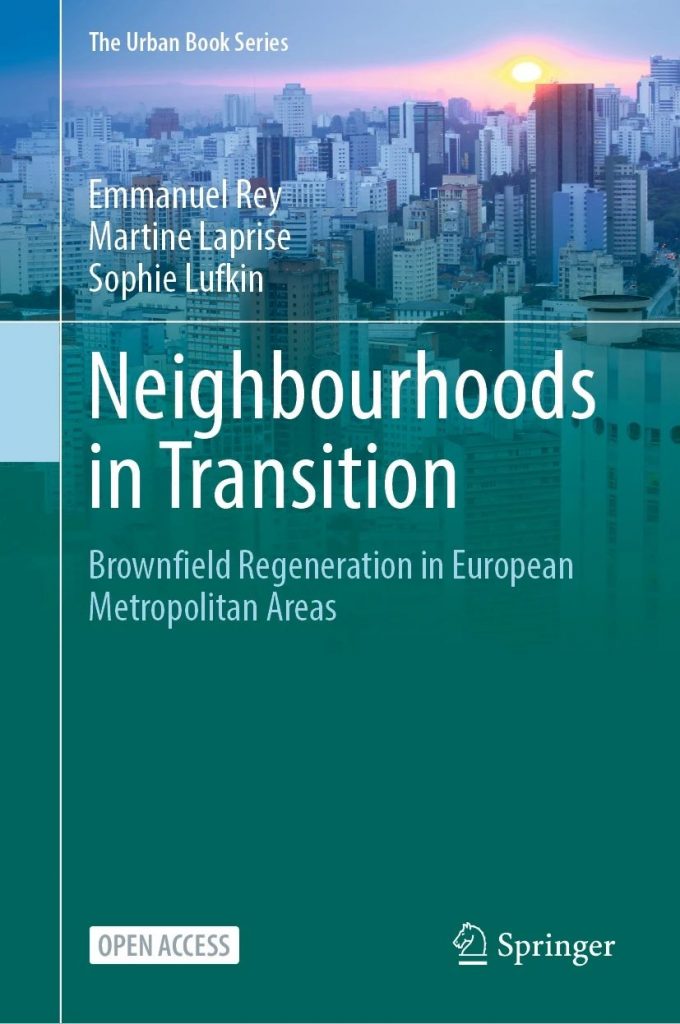The subject of urban brownfields and their regeneration remains both relevant to the transition of the built environment and complex to implement. For these reasons, it seemed appropriate to make the book accessible to the widest possible audience.
What is the project about?
The book Neighbourhoods in Transition is focused on the intersection between urban brownfields and the sustainability transitions of metreopolitan areas, cities, and neighbourhoods. Urban brownfields are sites in developed urban areas that have been affected by the former uses of the site; are derelict and underused; may have real or perceived contamination problems; and require intervention to bring them back to beneficial use [CABERNET (2006)]. The book provides both a theoretical and practical approach to the topic.
The book begins with a thorough introduction to urban brownfields and regeneration projects. It offers an overview of historic urban development and strategic areas in the hearts of towns to be developed. It then defines several key issues related to the topic, including urban brownfields, regeneration projects, and sustainability issues related to neighbourhood development. The second part of the book is focused on support tools, explaining the challenges faced, the steps involved in a regeneration process, and offering an operational monitoring tool. It applies the unique tool to case studies in three selected neighbourhoods and the outcomes of one case study are also presented and discussed, highlighting its benefits.

Why Open?
The book is based on three theses and summarizes 10 years of research carried out at the Laboratory of architecture and sustainable technologies (LAST). Indeed, the subject of urban brownfields and their regeneration has reached a certain stage of maturity within research. However, it remains both relevant to the transition of the built environment and complex to implement. For these reasons, it seemed appropriate to make the book accessible to the widest possible audience. It is still possible to order a hard copy for those who prefer printed books. Furthermore, even if a book is different from a scientific article, most research is now done online. Finally, we were also motivated to follow the Swiss National Science Foundation’s (SNSF) recommendations and EPFL’s Open Access policy.
Who benefits from it?
The audience for this book is both professional and academic. It can support researchers as an up-to-date reference book on urban brownfield regeneration projects, and also the work of architects, urban designers, urban planners and engineers involved in sustainability transitions of the built environment. So far, we have already reached 22,000 downloads, which is obviously much more than we would have expected with a traditional hard copy. Although the lack of other comparable open access architecture books makes it difficult to benchmark, it is a remarkable number for a recent academic book title, according to the publisher.
How did you make it Open?
To make the book available in open access under the Creative Commons 4.0 CC-BY license was a process that started from the very beginning. Since it was our first experience, we had to familiarize ourselves with the open access requirements, from the contract with the publisher (Springer) to the copyright of the photographs and illustrations. The resources regarding open access found on the EPFL Library’s website were a great help to understand the concepts.
On this specific issue of photographs, we understood that not all of them needed to be under the creative commons license in an open access book. Some images in the book are copyright-protected and a written permission from the photographer or architect was required to use them. That process must be well organized; started as soon as possible.
There are book processing charges (BPC) when Publishing in Open Access (around CHF 15,000 in total in our case). We tried to apply for the SNSF grants which proposes to cover the BPC charges. But going through this process made us realize that the current grant criteria are still geared towards scientific publications, and not really adapted to architecture books. We were lucky to receive a grant of CHF 2,500 from the EPFL Library.
Contact: Martine Laprise, Sophie Lufkin, Emmanuel Rey